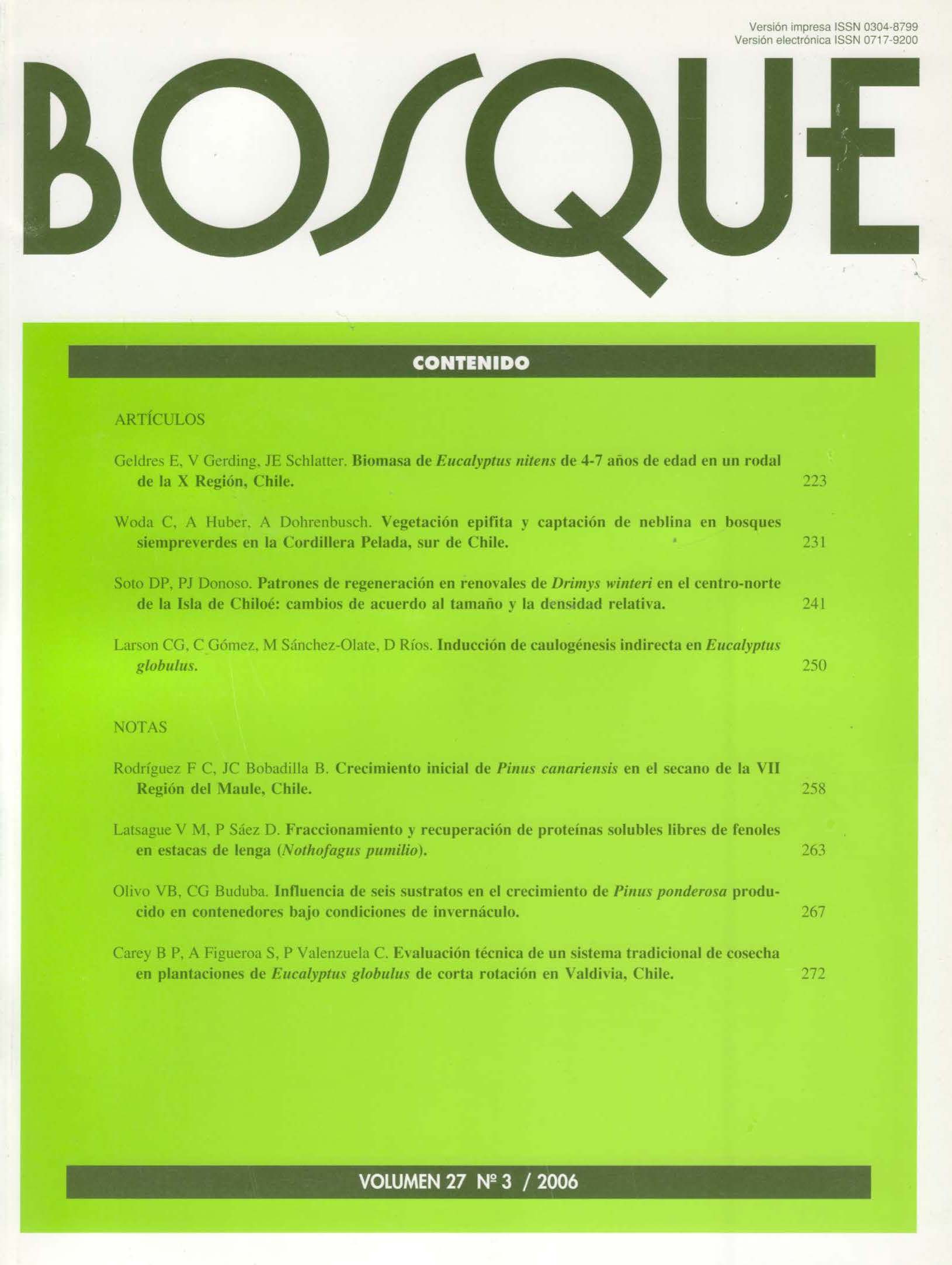Main Article Content
Dec 29, 2006
Abstract
This study documents the effect of fog precipitation in a temperate rainforest in Chile’s coastal range next to Valdivia and the occurrence of epiphytic groups within different forest types. In 2000, the total amount of rain was 6.966 mm. During the dry summer months, precipitation collected inside the forest exceeded rainfall outside the forest by up to 62% (93 mm) per month due to fog precipitation. In the primary forest (Laurelio-Weinmannietum), the epiphytes have a biomass of 2.2 t ha–1 and in a 140 year-old secondary forest (Drimys-Stadium) 2.0 t ha–1. In the 80-year-old secondary forest stand of Fitzroyetum with a very open canopy, the epiphyte biomass reached not more than 0.1 t ha–1. Epiphytic ferns and foliage lichens are more frequently present in darker areas, probably due to more equilibrated conditions of air humidity. In contrast, fruticouse lichens are more frequent in the bright stand of Fitzroyetum, where epiphytic ferns and foliage lichens are nearly absent. These complex interactions between light conditions, air humidity and the ability of stand components to capture fog which influence the abundance of epiphytes should be considered when the forest is managed. Changes in the epiphytic vegetation due to harvesting activities will have strong effects on biodiversity and on a balanced nutrient cycle.


